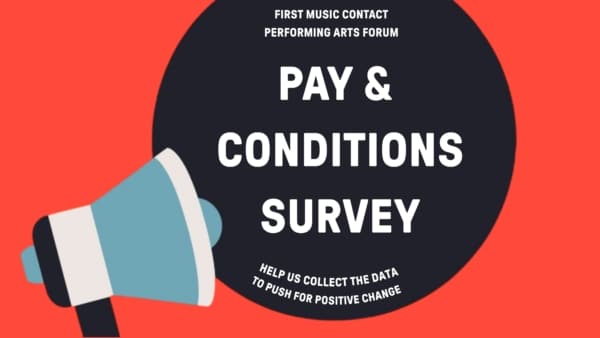Understanding and recording your energy use is the first step to reducing energy consumption in your building. Knowing how to read your meters and how to understand your bills will help you to see how your activities affect your energy use.
Download Guide to Energy – Green Arts Initiative in Ireland
This guide aims to help you understand how much energy your organisation is using to light and heat your building and offices and which fuels produce the highest carbon emissions.
The guide will be useful for building managers and Green Teams starting out on their journey to reduce their carbon footprint.
Thinking about reducing energy use at an early stage when designing your production or exhibition will help you to find opportunities to reduce energy use and also costs. For example, investing in the use of LED lighting can result in energy cost savings which more than cover the purchase price of new equipment and reduce emissions as well.
While all fuels provide energy (and all can be measured in kWh), the level of CO2 emissions produced per kWh (referred to as the carbon intensity) varies between fuels. Similarly, the cost per kWh varies significantly. Using the most appropriate fuel and less energy, in any form, will reduce costs and emissions. The carbon density of electricity is reducing year by year as the state invests in the decarbonisation of the national grid – essentially, ramping up the percentage of renewable electricity in that mix. The figure for 2023 (the most recent) was 42%.
Note: Biomass fuels are considered to be Carbon neutral as they are assumed to have absorbed CO2 during growth period.
Regulations affecting your energy use: While there are no restrictions in Ireland on how much fuel we use, there are certain legal requirements in terms of measuring the energy performance of buildings the Green Arts Initiative in Ireland is a Theatre Forum initiative supported by Creative Carbon Scotland over a certain size. The following buildings are obliged to Display Energy Certificate (DEC) in a prominent, public place:
- A building other than a dwelling which is occupied by a public body with a floor area greater than 250m2, and is frequently visited by the public.
- A building other than a dwelling which has a total useful floor area greater than 500m2.
Since 2010, public bodies must report their energy consumption annually to the SEAI for the previous year measured against a baseline (often referred to as M&R – monitoring and reporting). It is likely that reporting on energy usage and CO2 emissions will become a more widespread requirement in the future, particularly where organisations are largely funded by their local authorities or are in receipt of public money.
Monitoring your energy use: Establishing a system to record energy use will take some effort at first but once in place should take very little time to maintain. It’s worth creating a simple set of instructions on how to use your system so that other members of staff can find meters, bills and any spreadsheets or other recording systems you use. How you monitor your building energy use will probably depend on whether you pay your fuel bills directly or pay indirectly via your landlord if you are in a rented studio or office.
Where To Begin: Organisations Operating from Their Own Building or Paying Fuel Bills
To Get Your Baseline: Your DEC (if you have one) will give you a useful indicator as to the general energy efficiency of your building and the CO2 emitted. You can get a more detailed overview of your energy usage by extracting the details from your energy bills and using this data as your baseline. We recommend you set up a simple spreadsheet and enter the following information:
The date of the bill, the billing period covered, the amount of kWh used (separating night and day in the case of electricity), standing charges, PSO, Capacity Charge, Watless (if any) and VAT.
All of this detail can be found on your bill. Check out our webinar on Energy where we describe how to analyse an electricity bill. If you are still having difficulty reading your bills, call your supplier and ask them to explain the detail. Many suppliers give details on how to read bills on their websites. Update your spreadsheet every time a new bill is issued. It’s the job of five minutes to do this – but well worth it!
You can also manually read your meter more regularly (weekly or monthly) for a more exact understanding of the pattern of your energy usage. Include these details on a spreadsheet and aim to update them monthly if possible.
Looking At Your Meter: All electricity meters are due to be replaced with Smart Meters by the end of 2024. This will allow for improved energy efficiency and also for a much more accurate understanding of your energy usage as bills will no longer be estimated. In the meantime, identify where your meter is and familiarise yourself with reading it. Designate 5-10 minutes at the start of your week to do the readings. This way it will become part of your routine and allow for greater consistency between readings. Until a Smart Meter is installed at your venue, submit readings to your supplier once a month. Otherwise your bills will not be accurate and you will not be able to analyse your usage correctly.
Oil or Gas bills will itemise the quantity of heating fuel delivered. For a more accurate picture, it’s best to ensure that your fuel storage tank is filled at each delivery. The amount supplied will show how much fuel you have used since the last delivery and allow you to calculate your average weekly use over the period between deliveries.
It’s useful to focus on any available period of reduced activity to check for unneeded systems that haven’t been switched off, such as lights left on or heating set too high.
Record and convert your data. Include these details on a spreadsheet and aim to update them monthly if possible. Ideally, you should convert all fuels to kWh using the conversion rates included in the table reproduced earlier in this document.
In some instances, building or facilities manager may already be taking weekly meter readings or fuel delivery information in which case you can work with the data they are recording. This weekly data will give you a detailed picture of your building performance and the areas in which improvements to your energy and water consumption can be made.
Where to Begin: Organisations Based in Rented Offices or Studios
Ask your landlord to provide utilities data. As a tenant, you may be sharing a larger building with several other occupants and your landlord will pay for utilities for the whole building. Accessing weekly usage is unlikely to be practical and will be less relevant to individual office or studio users so you may only be able to track your usage on a monthly or annual basis. If you can gain access to your landlord’s energy usage via bills, you can estimate your own usage depending on the proportion of the building you occupy. Getting this data on a monthly basis and recording it in a spreadsheet will give you a good sense of your energy use.
Focusing on your usage will show how you might be able to co-operate with your landlord and fellow tenants to make reductions in the overall energy use for the building.
All Organisations
Calculate and communicate your emissions. It is useful to understand how your building energy use fits in to your carbon footprint and to communicate this to your colleagues and even your audiences. There are a number of tools and web resources you can use to calculate your emissions. For example:
- Sign up for an account on Julie’s Bicycle Creative Climate Tools. The CC Tools are a free set of unique carbon calculators developed by Julie’s Bicycle specifically for the creative industries. Carbon calculators tend to use country based emissions factors, so bear this in mind as electricity and public transport factors can vary depending on the generation mix.
- Ireland’s EPA (Environmental Protection Agency) suggests using www.carbonfootprint.com where you can register as a SME or an individual and calculate your carbon footprint.
- Simplest of all is to just calculate your energy emissions yourself by multiplying usage in kWh by the appropriate emissions factor for the fuel you used. These are noted at the beginning of this guide.
Once you have measured your energy usage and the associated emissions, this will act as an incentive to reduce your overall usage. One of the quickest ways to reduce the energy you use is simply by avoiding wasting it. This is a great opportunity to involve all of your staff team in identifying quick wins in saving energy.
You can start with simple measures such as making sure lights and equipment are switched off when not in use. Check that the heating timers and thermostats in the building are set correctly to avoid heating being on unnecessarily.
Use some of the expert advice available: for example
- The SEAI (Sustainable Energy Authority of Ireland) have produced an SME Guide to Energy Efficiency with detailed advice on reducing energy waste.
- Codema, Dublin’s Energy Agency have produced an excellent guide to Energy Saving Light Bulbs.
- Business Energy Scotland have listed 40 Easy Ways To Cut Your Energy BillYour energy usage will vary from year to year depending on your artistic programme (and also throughout the year for the same reason), so don’t be discouraged if you don’t immediately see savings. This could be because you are doing more shows or exhibitions and using your building more. There are also a lot of myths around energy consumption which it would be a good idea to dispel!
Dublin based organisations: Dublin’s Energy Agency, Codema has been working with the four Dublin based local authorities to create Dublin Climate Change Action Plans 2019-2024. Any arts organisation based within the four local Dublin authorities may already be aware of these initiatives, but if not, can find out more on https://dublinclimatechange.codema.ie/
Any questions? Email us at catriona@greenarts.ie and we’ll do our best to help you!
Please Note: This Guide was updated in August of 2023. It has been adapted from the Energy Guide published by Culture for Climate Scotland as part of its Green Arts Initiative. The information contained in this guide has been amended to suit an Irish context. The Green Arts Initiative in Ireland would like to gratefully acknowledge the support of Creative Carbon Scotland.


